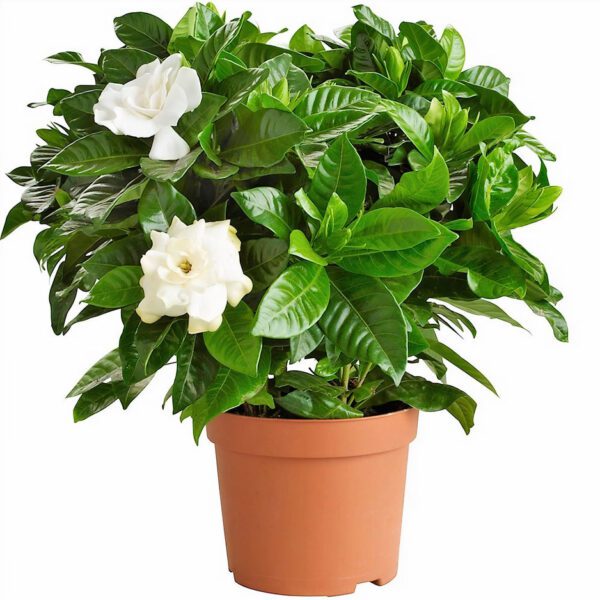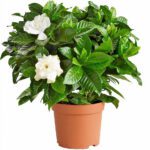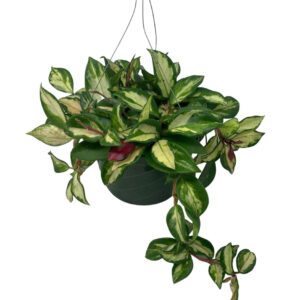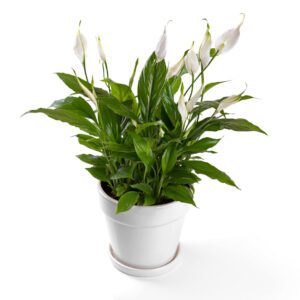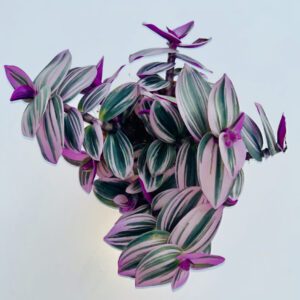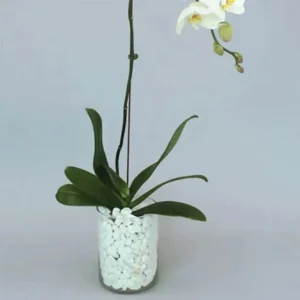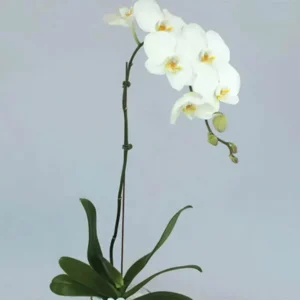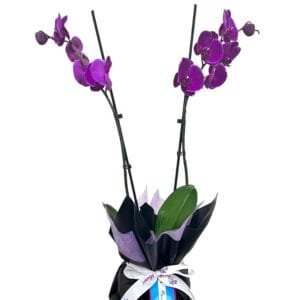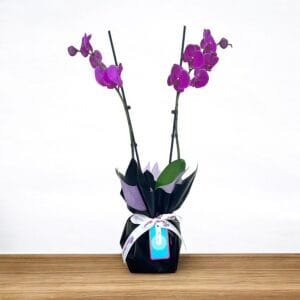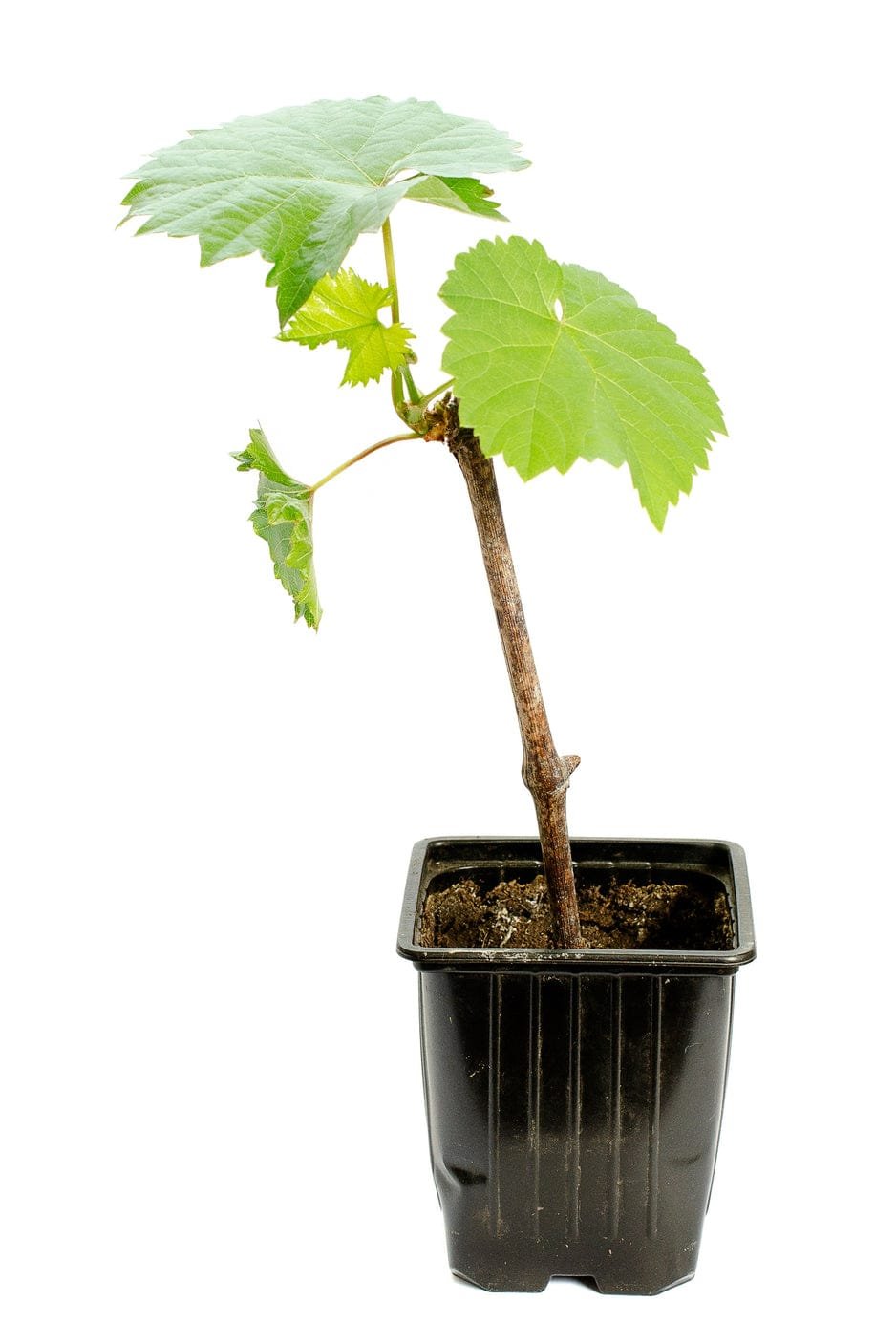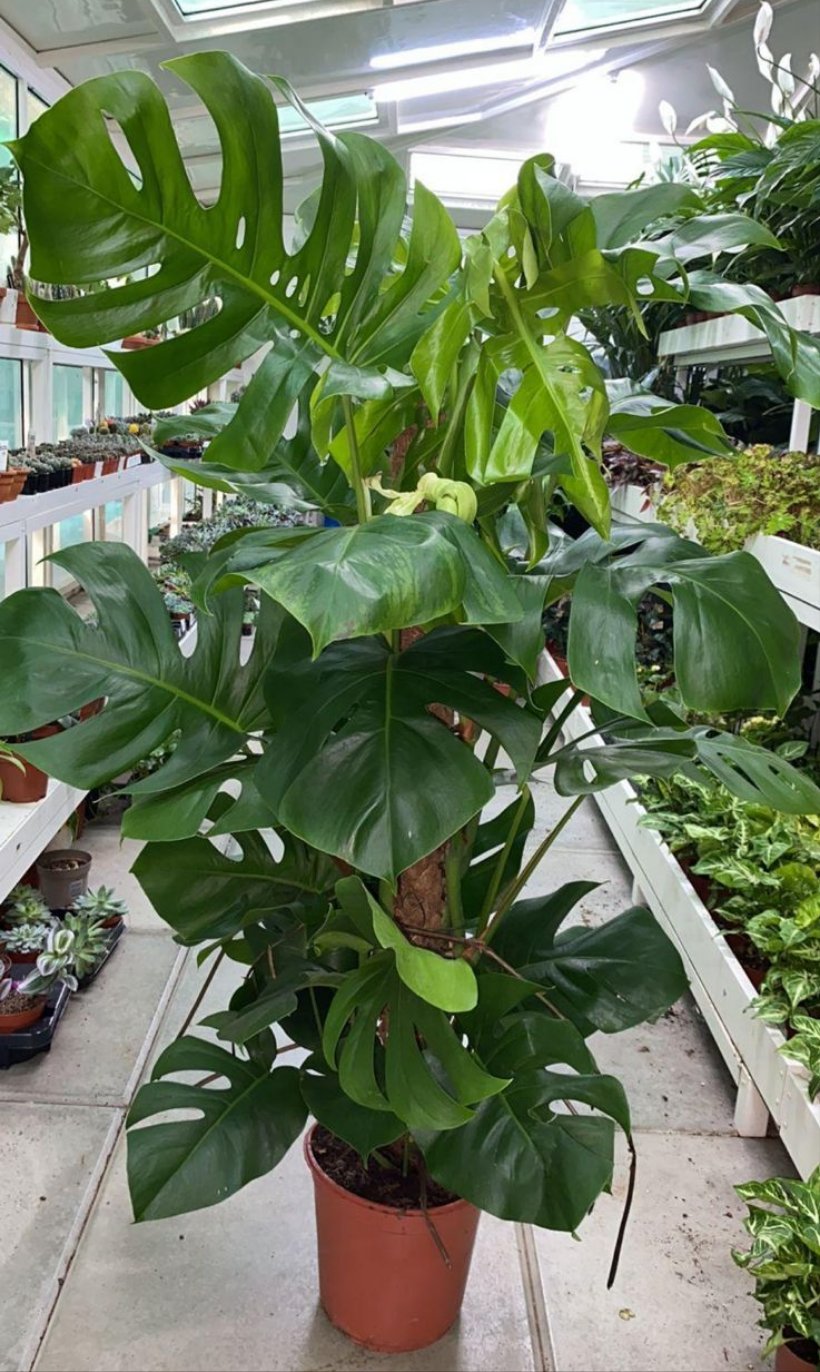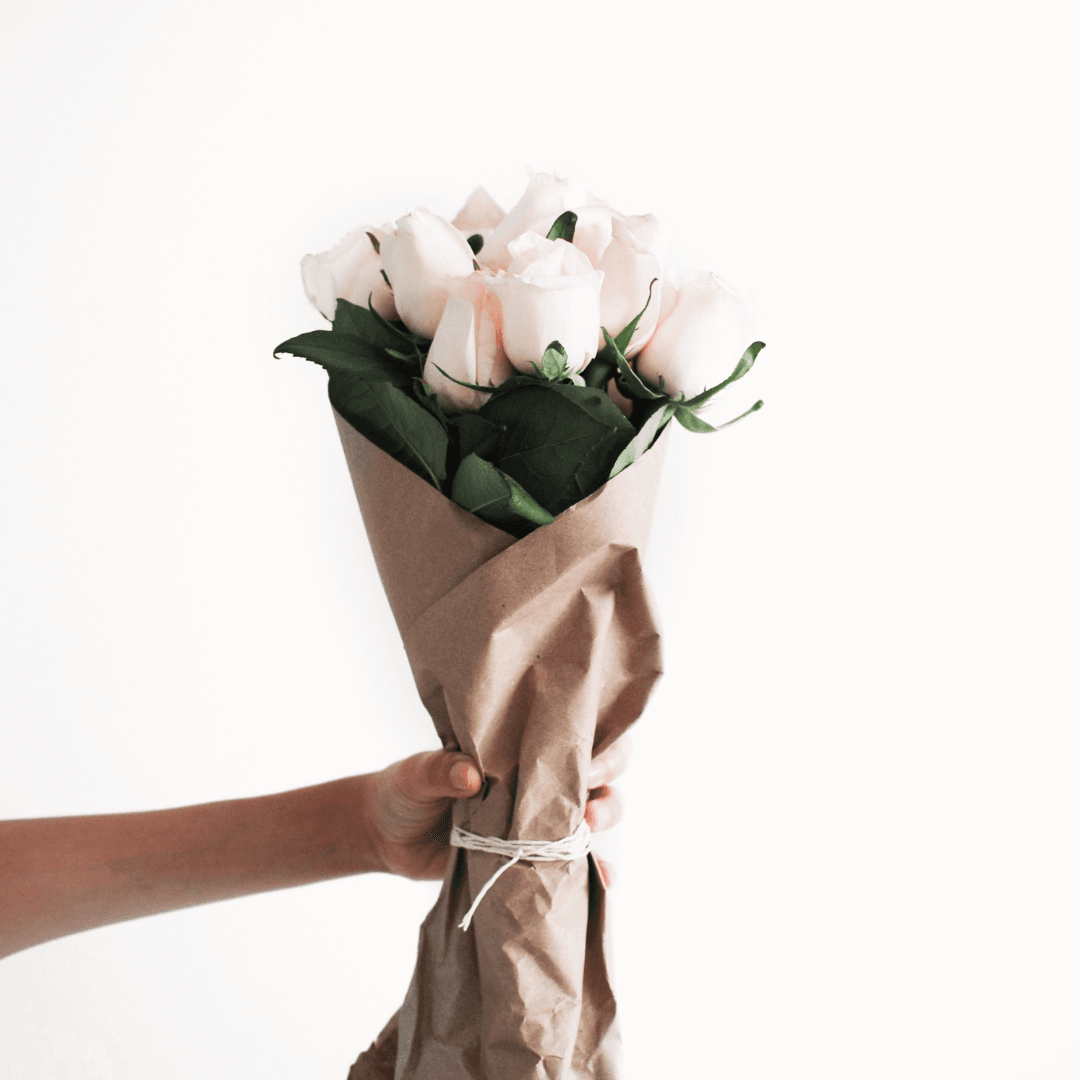Gardenia Jasminoides “Cape Jasmine”
The Gardenia Jasminoides, commonly known as Cape Jasmine, is a beautiful, evergreen shrub prized for its fragrant white or creamy blossoms and glossy, dark green leaves.
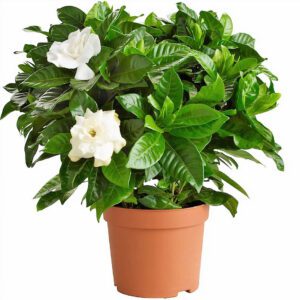
Gardenia Jasminoides “Cape Jasmine”
Description
Native to tropical and subtropical regions of Asia, this plant is renowned for its exquisite, jasmine-like fragrance, which fills the air when in bloom, making it a popular choice for indoor and outdoor gardens. Cape Jasmine produces large, waxy flowers that can be single or double-petaled, resembling roses in appearance. The plant can grow up to 4-6 feet tall, depending on the conditions, and it is often grown in pots, as a hedge, or as an ornamental plant in gardens.
Though Cape Jasmine can be slightly challenging to grow due to its specific care needs, its stunning beauty and intoxicating scent make it well worth the effort.
Plant Care for Gardenia Jasminoides “Cape Jasmine”
Light:
- Gardenias need bright, indirect sunlight. Indoors, place the plant near a sunny window, but avoid direct sunlight, especially during the hottest part of the day, which can cause leaf burn. Outdoors, they prefer partial shade, especially in areas with intense afternoon sun.
Watering:
- Gardenias prefer consistent moisture but do not like to be waterlogged. Keep the soil evenly moist but not soggy. Water the plant when the top inch of soil feels dry, ensuring good drainage. Overwatering can lead to root rot, while underwatering can cause the plant to drop its buds.
Humidity:
- Gardenias thrive in high humidity, making them a bit tricky to grow indoors in dry environments. Increase humidity by misting the plant, placing it on a humidity tray, or using a humidifier. Low humidity can cause the flower buds to drop.
Temperature:
- Cape Jasmine prefers temperatures between 60°F to 70°F (15°C to 21°C). Keep the plant away from cold drafts, radiators, or vents. Gardenias are sensitive to sudden temperature changes, and they do not tolerate frost, so bring outdoor plants indoors during colder months.
Soil:
- Gardenias require well-draining, acidic soil with a pH of around 5.0 to 6.0. Use a potting mix designed for acid-loving plants, like azaleas or rhododendrons, and ensure good drainage to prevent root rot.
Fertilizing:
- Feed the plant with a fertilizer formulated for acid-loving plants, such as azalea or camellia fertilizer, every 4-6 weeks during the growing season (spring through fall). This will help maintain soil acidity and promote healthy growth and blooming.
Pruning:
- Prune Gardenia Jasminoides after it finishes flowering to shape the plant and remove any dead or yellowing leaves. Regular pruning encourages bushier growth and more blooms in the next season.
Repotting:
- Repot the Gardenia every 2-3 years, or when it becomes root-bound. Choose a slightly larger pot with fresh acidic soil and ensure it has drainage holes. This will give the plant space to grow and help maintain healthy root development.
Flowering:
- Gardenias typically bloom from late spring to summer, but they can also bloom intermittently throughout the year under the right conditions. To encourage blooming, provide plenty of bright, indirect light and maintain consistent moisture and humidity.
Pest Control:
- Gardenias can be susceptible to pests like aphids, spider mites, and mealybugs. Regularly inspect the plant and treat any infestations with insecticidal soap or neem oil. Ensuring proper air circulation can also help prevent pest problems.
Toxicity:
- Gardenia Jasminoides is considered non-toxic to humans, but it can cause mild gastrointestinal upset in pets if ingested, so it’s best to keep it out of reach of curious animals.
With its breathtaking flowers and enchanting fragrance, Gardenia Jasminoides “Cape Jasmine“ is a show-stopping plant that adds a touch of elegance to any indoor or outdoor garden. While it may require some attention to detail, the reward of its stunning blooms and aromatic scent is well worth the effort.
Additional Information
| Size | 20cm – 30cm |
|---|---|
| Flowers Color | White |
Disclaimer
The image displayed is for reference only. The actual product may differ in shape, appearance, climate, age, height, and other factors. Plants will be delivered in plastic pots unless the customer explicitly selects a different pot option.
All information provided is shared in good faith. However, we make no representations or warranties of any kind, express or implied, regarding the accuracy, adequacy, validity, reliability, availability, or completeness of the information on this site.

